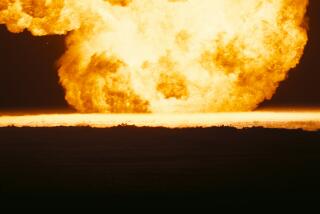SCIENCE WATCH : Making Whole
New science often makes new technology possible. Nuclear physics (science) makes possible the nuclear power plant (technology), molecular biology (science) makes possible genetic engineering (technology), and so forth. But that traffic runs both ways: Scientists’ most brilliant hunches sometime wait on engineering for their confirmation.
Are there such things as atoms? Fully a century lay between Scottish botanist Robert Brown’s 1827 observation of the random movement of pollen in water--a phenomenon that came to be called the Brownian motion--and French physicist Jean-Baptiste Perrin’s 1926 Nobel Prize for work that proved that atoms and molecules really exist. What lay between Brown and Perrin was both Albert Einstein’s 1905 explanation of the Brownian motion via then-infant atomic physics and the invention of the ultramicroscope put to such effective use by Perrin.
The existence of black holes, objects of such density that their gravity prevents even light from escaping, is predicted by Einstein’s as well as Isaac Newton’s physics. But compelling evidence of the existence of black holes had to wait for the launching, two years ago, of the Hubble Space Telescope. This week that evidence was in hand. Fuller confirmation may come when a “faint objects spectrometer” aboard the telescope is repaired.
Breathtaking, mind-boggling. . . . Ordinary adjectives fail before so extraordinary a scientific idea as the black hole and the technical virtuosity of its now perhaps imminent confirmation.






